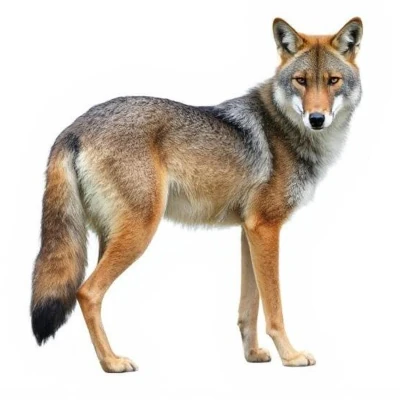Italian Wolf: The Predator of the Apennines
The Italian Wolf (Canis lupus italicus), also called the Apennine wolf, is a subspecies of the gray wolf endemic to the Italian peninsula. This iconic predator, once on the brink of extinction, has made a remarkable comeback thanks to conservation efforts.
Physical Description
The Italian Wolf is medium-sized, typically weighing between 25-35 kg for males and 20-30 kg for females. Its coat varies from gray-brown to gray-reddish, with lighter shades on the belly. It features a broad head, powerful jaws, and legs adapted to mountain terrain.
Classification
The Italian Wolf (Canis lupus italicus) belongs to the Canidae family. Its scientific classification:
- Kingdom: Animalia
- Phylum: Chordata
- Class: Mammalia
- Order: Carnivora
- Family: Canidae
- Genus: Canis
- Species: Canis lupus
- Subspecies: Canis lupus italicus
Habitat
The Italian Wolf primarily inhabits the Apennine Mountains at altitudes between 500-1500 meters. Its range also extends into some Alpine areas and occasionally lower regions. It prefers mixed forests and areas with minimal human disturbance.
Behavior and Social Life
Unlike its cousin the gray wolf, the Italian Wolf forms smaller packs, typically consisting of 2-7 individuals. It's a territorial animal that marks its domain (covering 100-250 km²) through howling and scent marking. Italian wolves are primarily nocturnal and crepuscular.
Diet
The Italian Wolf's diet consists mainly of:
- Wild ungulates (roe deer, chamois, wild boar)
- Small mammals (hares, rabbits)
- Occasionally livestock (when wild prey is scarce)
This subspecies plays a crucial role in controlling herbivore populations and maintaining ecological balance.
Conservation
Classified as "endangered" in the 1970s with only 100 individuals, the Italian Wolf population has rebounded to about 2000 today thanks to:
- Legal protection (protected since 1971)
- Creation of ecological corridors
- Reintroduction programs
- Community education initiatives
Despite this success, the species remains threatened by poaching and road accidents.
Closest Genetic Relatives
The Italian Wolf is genetically close to:
- The Eurasian Wolf (Canis lupus lupus) - larger and lighter
- The Iberian Wolf (Canis lupus signatus) - found in Spain and Portugal
- The Balkan Wolf (Canis lupus) - Balkan population
Genetic studies show the Italian Wolf has unique adaptations to its mountainous environment.
Observation Tips
To observe Italian Wolves without disturbance:
- Season: Winter is ideal (coat visible against snow)
- Time: Dawn and dusk
- Techniques: Use binoculars and camera traps
- Behavior: Remain silent and still
- Ethics: Never feed wolves or approach dens
The Italian Wolf, symbol of the Apennine wilderness, represents a remarkable conservation success story. Its presence is vital for maintaining the balance of Italy's mountain ecosystems.
Wild Dog Breeds
© 2023 touslestoutous.com − All doggies. All rights reserved.
"The data available on this site may be used provided that the source is duly acknowledged."
